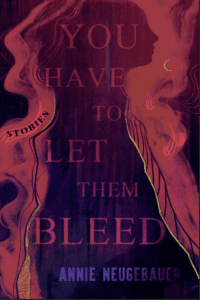Originally posted on December 20, 2010 at 8:16 PM
Whereas the popularization of vampires timeline relied predominately on literature, the timeline for zombies will consist mainly of filmography. This is for the practical reason that not many famous zombie novels exist, especially before 1998 (don’t believe me? check out this Wikipedia chart … not that I think Wikipedia is a complete resource, but still, it gives an indication). This is because, in my opinion, zombies are primarily significant for their visual impact, much more so than their vampire counterparts. Although, to be fair, the inspiration for those movies, when you boil it down, almost always comes from literature (or other movies themselves inspired by literature), so I did include the biggies.
• 2150-2000 BC The Epic of Gilgamesh, epic poem
• 1818 Frankenstein; or, The Modern Prometheus, novel by Mary Shelley
• 1920 The Cabinet of Dr. Caligari, silent movie by Robert Wiene
• 1921 “Herbert West—Reanimator,” short story by H. P. Lovecraft
• 1929 The Magic Island, novel by W.B. Seabrook
• 1932 White Zombie, movie by Victor Halperin
• 1936 Things to Come, movie based on the novel by H.G. Wells
• 1954 I am Legend, novel by Richard Matheson
• 1968 Night of the Living Dead, movie by George A. Romero.
• 1981 Hell of the Living Dead movie by Bruno Mattei
• 1983 Thriller, music video by Michael Jackson
• 1985 Return of the Living Dead, movie by Dan O’Bannon
• 1985 Re-Animator, movie loosely based on the Lovecraft story
• 1988 The Serpent and the Rainbow, movie by Wes Craven
• 1993 Army of Darkness, movie by Sam Raimi
• 2002, 2004, 2007 and 2010 Resident Evil series, movies based on the video game by Shinji Mikami
• 2002, 2007 28 Days Later and 28 Weeks Later, movies by Danny Boyle and Juan Carlos Fresnadillo
• 2003 House of the Dead, movie by Uwe Boll
• 2004 Dawn of the Dead, movie remake by Zack Snyder
• 2004 Shaun of the Dead, movie by Edgar Wright
• 2009 Zombieland, movie by Ruben Fleischer
Before written history, stories of zombies originated in the West African spiritual belief system of Vodun, which told of people being controlled like puppets by a powerful spiritualist. I would argue, however, that similar myths existed in many cultures, as evidenced by The Epic of Gilgamesh. This epic poem is arguably the oldest written story on Earth. Can’t say I’ve read it, but apparently it mentions the undead hungry for human blood or flesh.
Most people have heard of Frankenstein, in which a mad scientist pieces together a “monster” from scrap human body parts. The only work I found worth mentioning from the 19th century, Frankenstein’s monster is not yet what we would think of as a zombie, although he does share some significant traits.
Zombies were a small but present icon in our culture from the 1920’s through the 1930’s. Stories, movies, and novels all presented zombies in an array of different lights – including White Zombie which ironically starred Bela Lugosi, the most famous Dracula actor to ever take the screen. Some people argue that the 1936 film Things to Come anticipated the modern “zombie apocalypse” trend, but the infected in that movie aren’t quite zombies, not to mention that this argument becomes somewhat irrelevant when you look at the next fiction piece on the list in 1954:
As I hinted in part II, perhaps the most ironic (and hard to swallow, for die-hard zombie fans) aspect of zombie culture is that what it is today was most heavily influenced by a zombie novel – namely, I am Legend by Richard Matheson. Say “zombie” to any person under 30 today, and most likely they picture the post-apocalyptic, viral, running-zombie world of 28 Days Later before they picture the slow-moving, black-and-white, graveyard churning world of zombie-yore. Why? Because the most game-changing and iconic zombie media of all time came out in 1968 with George A. Romero’s Night of the Living Dead, and that movie was based admittedly and blatantly on the apocalyptic setting of Matheson’s vampire novel.
Would Things to Come have eventually influenced future zombie movies in the same viral apocalypse direction? Possibly. But it didn’t, because Romero did first and more thoroughly, and he got the concept straight out of one of the most overlooked vampire novels ever written. We’re hard-pressed today to find any zombie movies based on graveyard-raising, voodoo-caused corpses. Now it’s all about the disease.
As if Romero wasn’t enough, Michael Jackson took zombies to the top of the “cool” list in 1983 when he put out his music video for “Thriller.” Dancing dead, anyone?
Worth mentioning: You know that image you have of a zombie going “Brains!” and walking toward you with uplifted arms? That comes from Return of the Living Dead. And yes, it was supposed to be funny.
Wes Craven’s late 80’s film The Serpent and the Rainbow was based on a non-fiction book by Wade Davis. It attempted to reestablish the original link between zombies and Vodoo.
Now comes one of the most interesting detail-changes in the genre, in my opinion. In 2002 the first installments in both the Resident Evil and 28 Days Later series came out. What did they have in common that had never been done before? The zombies ran. Fast. Gone are the days of slow-moving corpses that are scary for their persistence and sheer numbers; these zombies can and did chase you, and fast-moving camera work enhanced the effect. Why the change? Not sure. People disagree over which is scarier, and I can see both sides of the argument. I’ll talk more about this change in part IV.
And finally, zombies have reached their stride (sorry). Zombies appear in movies, tv shows, books, comic books, video games, and even wedding themes. What do you do when something has become this popular? Well, you make fun of it, a la Shaun of the Dead and Zombieland. It’s a beautiful thing, and zombies are still on the rise. Will they burn out? Do they have the staying power of vampires (who, according to some Twilight-sick spectators, are so cool they reached that not-cool-anymore stage)? Let’s watch and see.
Coming up next: the distinctions between vampires and zombies. What makes which creature, or “species,” which, and do the lines ever become blurry?
Be sure to check out the other posts in the series:
Vampires and Zombies, part I: introduction
Vampires and Zombies, part II: the popularization of vampires (in western culture)
Share this:





Might I add ‘The Walking Dead’ show and comic books? I feel like it really helped popularize the zombie genre. 🙂
Definitely! The show didn’t happen until long after I’d written this, and I never actually heard of the comic books until then. But they’ve sure changed the game since then, haven’t they?